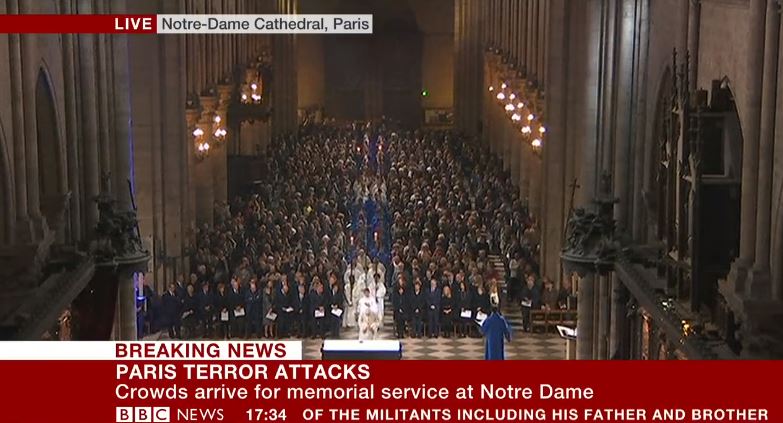![VOTIVE CANDLES By Tiger Craven (Own work) [CC BY-SA 4.0 (http://creativecommons.org/licenses/by-sa/4.0)], via Wikimedia Commons](https://wp-media.patheos.com/blogs/sites/148/2015/06/Votive_candles-300x225.jpg)
By Tiger Craven (Own work) [CC BY-SA 4.0 (http://creativecommons.org/licenses/by-sa/4.0)], via Wikimedia Commons
Crux has the story of the unexpected presidential visit to a Catholic shrine:
The president was on his way to the airport after attending a Democratic fundraiser the night before and spending the morning at the National Hurricane Center….
Obama is the first sitting US president to visit. And Dominguez had barely an hour to prepare. He was in a meeting with his staff when Secret Service agents appeared at the office, telling him the president “was nearby and he wanted to get to know this place.”
Within seconds, carloads of SWAT-clad agents with bomb-sniffing dogs descended on the shrine, quickly and efficiently checking “every corner, every crevice, every door,” Dominguez said.
He asked if he should tell the dozen or so people praying inside to leave. The agents said no. They just had to be screened with metal detectors. A few minutes later, Dominguez was standing at the glass doors of the shrine, waiting to welcome the leader of the free world.
It’s good that the President had the opportunity to visit the Shrine, to see the image of Cuba’s patroness, and to hear from Father Dominguez about the history of Cuba and the suffering of Cuba’s people.
But I wonder whether President Obama fully realized the significance of the candle? That it’s a form of prayer, and that our prayer rises to God like the smoke from the flame.
Ann Ball, in her Handbook of Catholic Sacramentals, explains that the practice of lighting candles in order to obtain some favor probably has its origins in the custom of burning lights at the tombs of the martyrs in the catacombs. The lights burned as a sign of solidarity with Christians still on earth. Because the lights continually burned as a silent vigil, they became known as vigil lights. As we light the vigil light, we say a prayer and ask Mary or the saint whose altar we visit to intercede for us before the throne of God.
And Father William Saunders offers a comprehensive historical perspective in a column on the EWTN website. He begins:
In Judaism, a perpetual light was kept burning in the Temple and the synagogues not only to ensure the ability to light other candles or oil lamps in the evening but also to show the presence of God (cf. Ex 27:20-21 and Lv 24:24). Later, the Talmud prescribed a lit lamp at the Ark, where the Torah and other writings of Sacred Scripture were kept, to show reverence to the Word of God. (This practice probably influenced our own one of having a lit candle near the tabernacle to indicate the presence of and to show reverence for the Blessed Sacrament.)
He continues to describe the use of lit candles in liturgical processions, evening prayer services and funeral processions, then describes a very interesting medieval custom of lighting a candle or several candles to equal an individual’s height (called “measuring”).
In John 8:12, Jesus said,
“I am the light of the world. No follower of Mine shall ever walk in darkness; no, he shall possess the light of life.”
The symbolism of the flame is emphasized again in John 12:46, when Jesus says,
“I have come to the world as its light, to keep anyone who believes in Me from remaining in the dark.”











